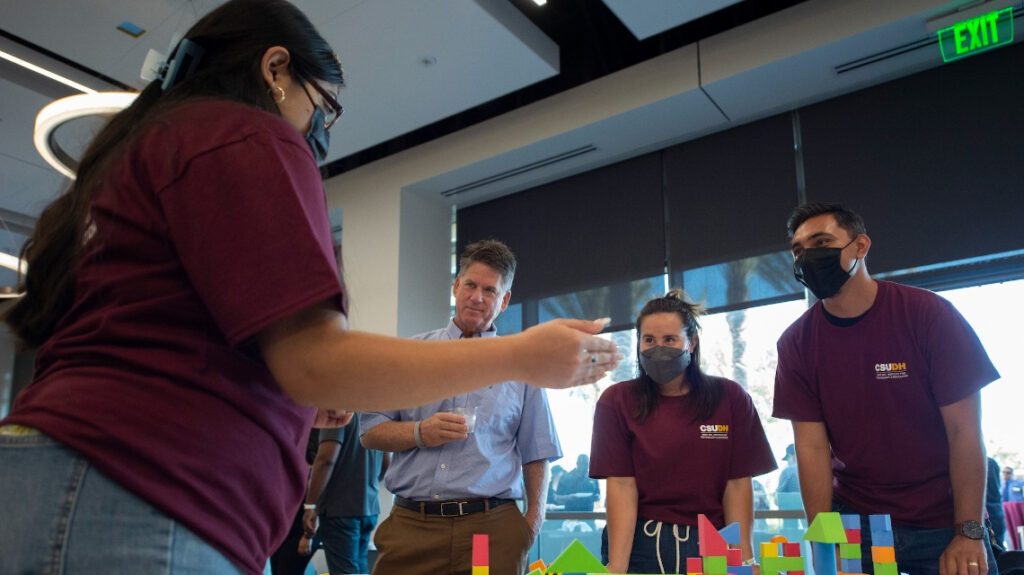
Source: Daily Breeze
Cal State Dominguez Hills will try to address the lack of diversity in the tech industry by training more educatorsto teach computer science in K-12 schools – thanks to a $5 million grant from the company that owns social media application Snapchat.
CSUDH sudents, teachers, administrators and alumni, as well as Snap Inc. representatives, recently gathered to celebrate the launch of the Snap Inc. Institute for Technology and Education, which is housed within the College of Education on the Dominguez Hills campus, with support from the nonprofit CSforALL.
The institute will train aspiring educators to effectively impart computer science skills to students with an ultimate goal to make equity-centered computer science a key part of K-12 education in Los Angeles.
“It is an investment in the mission and the purpose of trying to educate the next generation of students to provide them with a technological advantage,” CSUDH President Thomas A. Parham said at SITE’s opening celebration last week. “There is a big divide in this nation and it isn’t just political, it isn’t just racial; it is technological.”
This divide is present in the homes of Los Angeles area students, he said, with many of them sharing devices among family members and lacking a stable internet connection. These challenges coupled with the limited computer science education available in schools means that many low-income students and students of color are not set up to acquire tech skills and potentially enter that industry.
The $5 million donation was partially prompted by Snap Inc.’s own poor track record with diversity, said Jasson Crockett, the company’s public policy manager.
“Snap has a bit of a diversity problem. Not so much a problem perhaps as a glaring, gaping deficit,” he said. “And we’re certainly not alone.”
Black employees comprise 5.2% of staff and Hispanic/Latino employees make up 7.2%, according to Snapchat’s 2022 diversity report. Google’s demographic breakdown is similar, according to its 2022 diversity report; Black workers comprise 5.3% of staff and Latino workers make up 6.9% at Google, according to the diversity report.
Reflecting on this industry-wide problem led Snap Inc. CEO Evan Spiegel to ask where his company can invest to make the biggest impact on diversity in tech, Crockett said.
“If we want more people of color to pursue careers in tech, we have to expose more youth of color to computer science early,” Crockett said. “If we want to expose more students of color to computer science, let’s make sure we’re training enough computer science teachers.”
CSUDH, which is in the Carson area, was selected for the $5 million donation – the largest in the university’s history – because of its stellar reputation for providing economic mobility, its diverse student body, and because it is one of the leading producers of K-12 teachers in Los Angeles.
The university ranked second in the nation for creating economic mobility in a study by public policy think tank Third Way. Its student body is around 90% people of color, including 65% who are Hispanic/Latino and 11% who are Black. The majority of students in the College of Education, meanwhile, come from – and go on to teach in – communities within a 50 mile radius of campus, said Dean Jessica Zacher Pandya.
Parham said he hopes the work done at SITE will have a ripple effect in communities where graduates work.
“We will train teachers to provide technological education for these young people and the students they teach at every level,” Parham said during the Thursday, Sept. 22, celebration. “It is those students who will then come back and train their parents and impact their communities and impact the next generation of students coming behind them.
“That is the magic that we look forward to.”








